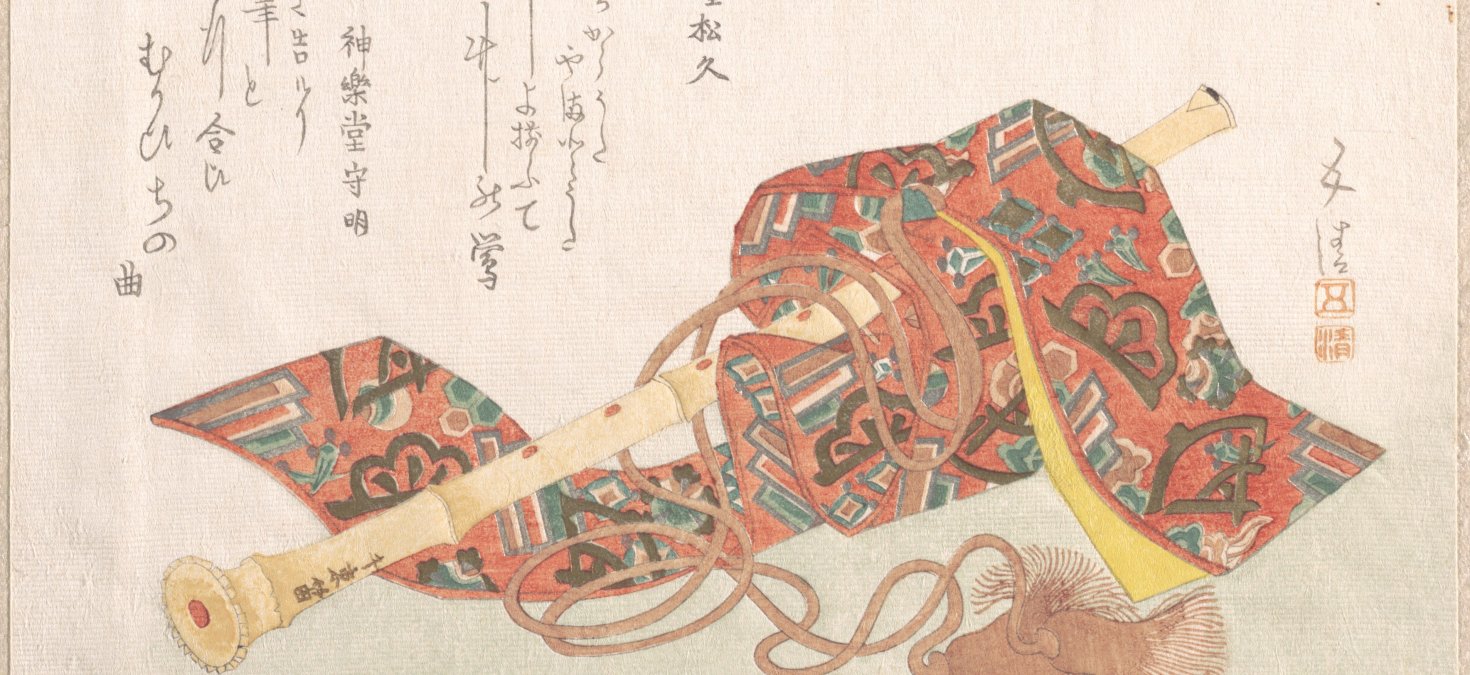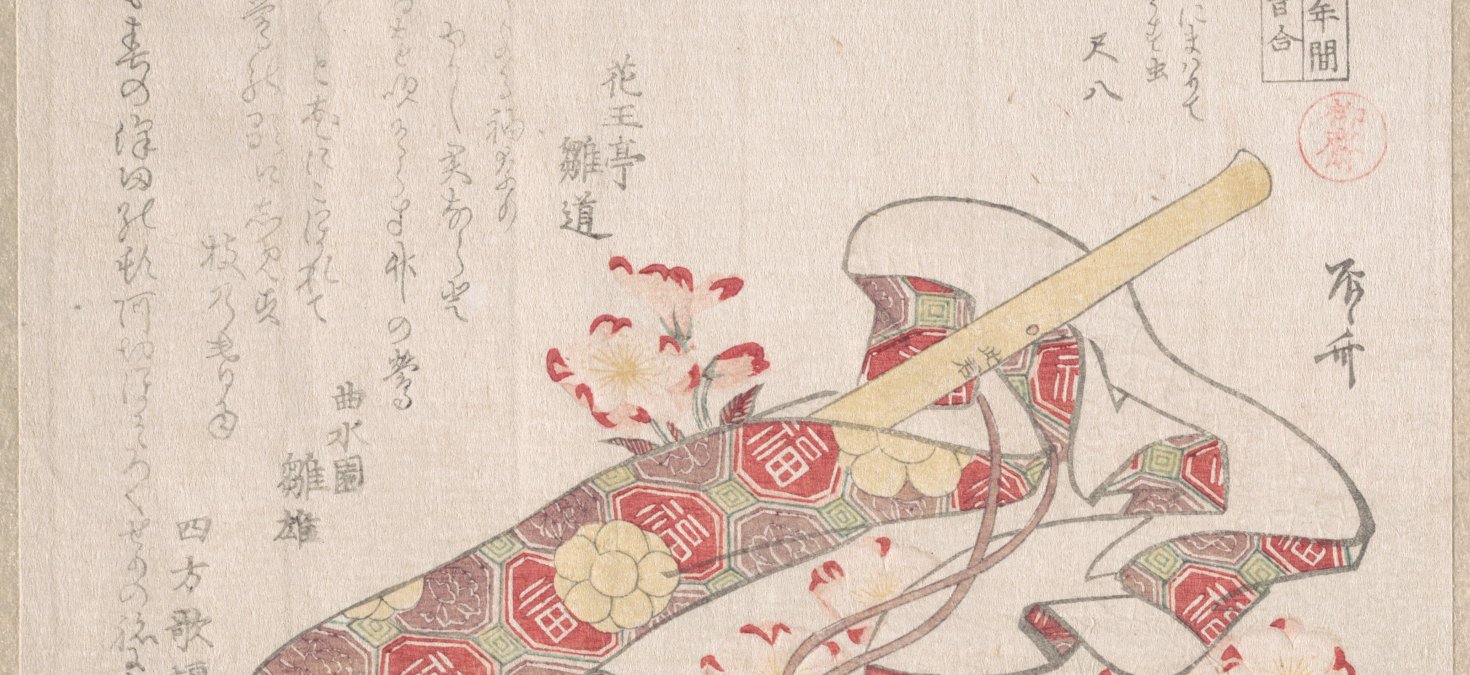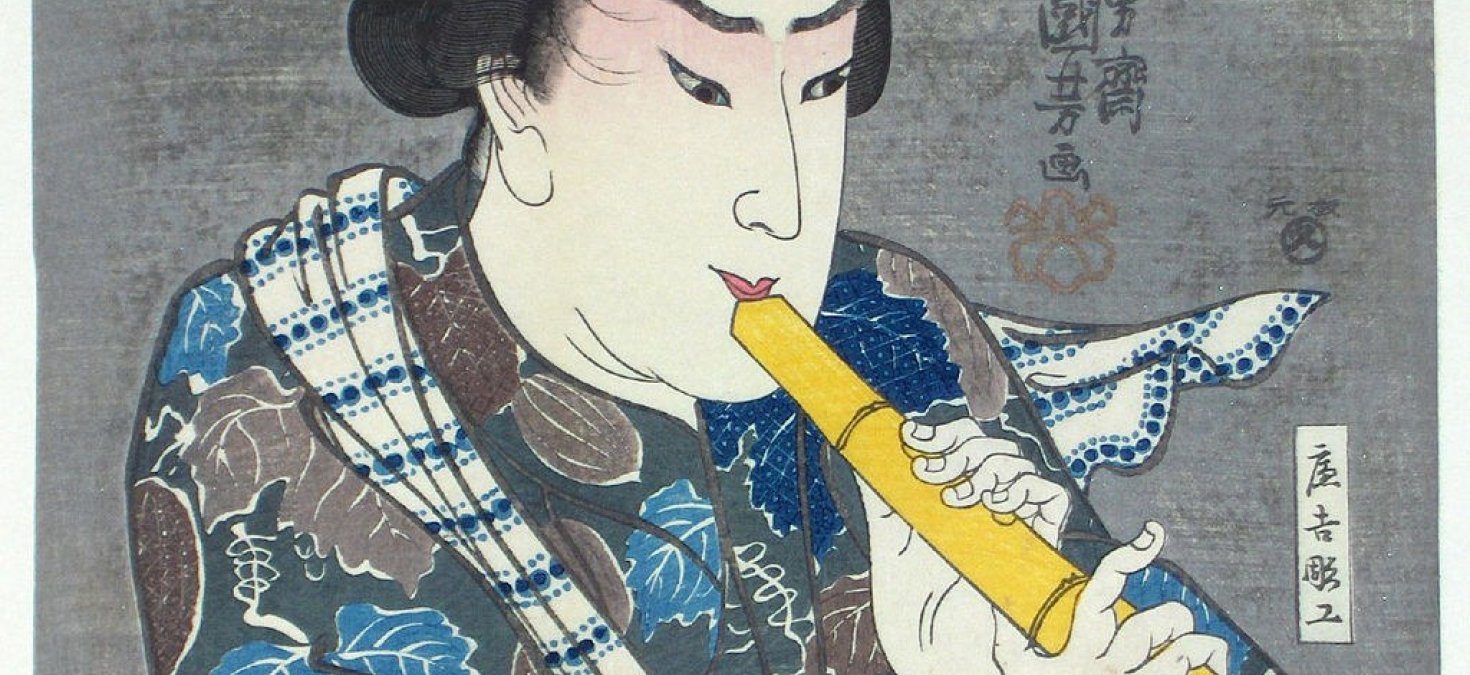Shakuhachi: The History and Practice of Suizen

By Ben Macke, Japan House Intern and Senior in Music
The shakuhachi is classified as an end-blown vertical notched oblique flute. Unlike the Western transverse flute, the shakuhachi is held vertically. In a Western flute, there is a tone hole that is blown straight across to produce a sound, similar to how you blow across the top of a glass bottle to create a sound. With the shakuhachi, there is a notch cut into the top end of the flute, and the stream of air is blown at different angles against this notch to create various tones and sound effects.

Shakuhachi (A Kind of Bamboo Flute) and Its Cover by Sunayama Gosei via The Met Museum
The name of the shakuhachi is derived from its length. One shaku, a standard unit of length often referred to as the Japanese foot, and hachi meaning eight or eight sun, a subdivision of the shaku. Together, the word shakuhachi is simply referring to how long the piece of bamboo is, 1.8 shakuor about 54 centimeters. The modern shakuhachi has four holes in the front and one hole in the back; however, throughout the instrument’s long history, the number of holes has varied with some shakuhachi having six or seven holes. The four-holed modern flute is tuned to a pentatonic scale containing no semitones; other pitches including a full chromatic scale are created with cross fingers, partially covering holes, and by adjusting the angle at which the airstream is blown into the notched mouthpiece.
Although the exact ancient origins of the instrument are still being studied, there is a consensus among scholars that the bamboo flute made its way to Japan from China via the Korean Peninsula in the middle of the 8th century. At the time, the shakuhachi was a part of the instrumental ensemble of Gagaku, the imperial court music of Japan which is still practiced and performed to this day. Sometime in the 10th century, Japanese court music went through changes in orchestration, and the shakuhachi was no longer included. This is most likely because the bamboo flute was not loud enough to be heard over the other wind instruments and drums.

Shakuhachi Player by Kuniyoshi, Public domain, via Wikimedia Commons
After the shakuhachiwas removed from the Gagaku ensemble, there were several centuries in which no references to the instrument appears in surviving historical documents. However, during the Edo period, there was a resurgence of the instrument in the Fuke sect of Zen Buddhism. Followers of Fuke Zen were well known for playing shakuhachi in public while begging. These monks originally were known as komosō (literally translating to “straw mat monks”), but eventually became known as Komusō (“monks of emptiness”). These “monks of emptiness” were easily spotted in public wearing white robes with a large straw-woven basket covering their heads, representing the monk’s removal of self and ego.
At the beginning of the 17th century, many rōnin (masterless samurai) joined religious sects to maintain a high rank in society. Fuke sect monks were given special permission from the government to travel freely throughout the country during a time when travel restrictions were heavily enforced for many citizens of Japan. Because many of these rōnin had lost their masters (most likely defeated by the shogunate), the ruling government allowed free travel in exchange for information. Essentially, the komusō monks were able to spy on behalf of the shogunate due to their concealed identities and mysterious title as “monks of emptiness”.
丹波茶祭り_虚無僧_DSCF1443_bcc9dce125f07f9985fad0e7251f4966.jpeg)
Daikokuji-Sasayama Komusō Shakuhachi via Wikimedia Commons
During this significant period in the history and development of the shakuhachi, the Fuke sect was very well known for its use of the flute as a tool for meditation. Despite its origin in the Gagaku instrumental ensemble, many komusō monks embraced the bamboo flute not as an instrument, but instead as a spiritual artifact and tool for meditation. The resulting solo repertoire for shakuhachi which was collected during the 18th century became known as honkyoku, or “original pieces”.
Not only did the Komusō monks influence the transformation of shakuhachi repertoire, but they also changed the way it was constructed. The Fuke sect is credited with using the root end of the bamboo to make their shakuhachi. The tapered bore gave the flute a much more resonant timbre, and the instrument changed significantly in the musical techniques and styles it could play.
Suizen, or “blowing Zen”, refers to the spiritual practice of shakuhachi and the performance of the honkyoku. The music of the komusō monks has specific technical and aesthetic features that predispose it to resit being heard as what most people think of as music. Instead of a virtuosic performance with lots of running note lines, honkyoku pieces feature far fewer notes with more of a focus on ornamentation and timbral effects. One of the most important Zen statements for those who practice Suizen is Ichion jobutsu. This phrase means “to achieve enlightenment through a single note”, and is emblematic of the minimalist aesthetics of many other Zen practices. Through the perfection of a single tone, one can take one step closer toward enlightenment.
Another foundational idea in Suizen is the difference between “sound” and “noise”. Sound is intentional and is more in line with what most people might hear as music. On the other hand, noise has a more natural affiliation. In shakuhachi playing, an emphasis is given to creating a wide variety of noises; a breathy tone might resemble the noise of the wind, while a harsher, more articulate tone might try to recreate the noise of rain. A wide variety of timbres can be achieved on the shakuhachi, and it is with this diversity of tonal techniques that practitioners of Suizen use the instrument as a meditative and spiritual tool.